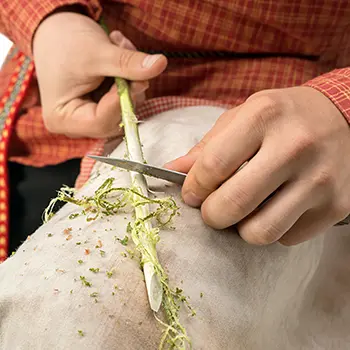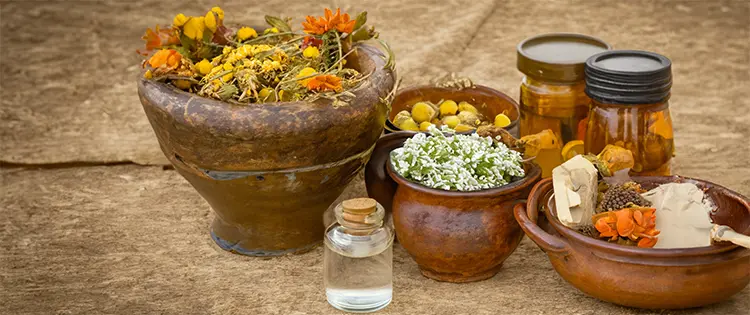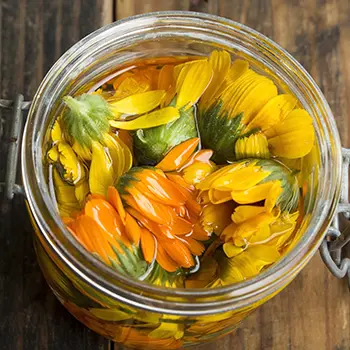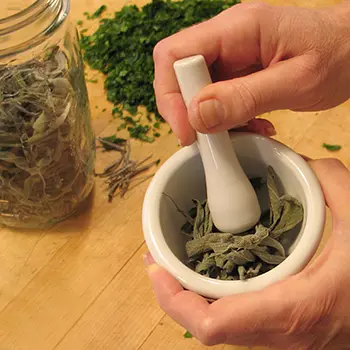The time during the Civil War was really tough, and it wasn’t just the fighting that made life hard for regular people.
Back then, they didn’t have all the fancy medicines we do now, so lots of folks relied on natural cures from plants and such.
Let’s take a closer look at the old-fashioned remedies that were common during the Civil War.
Willow Bark For Pain Relief
As the cannons roared and soldiers faced minor and severe injuries, willow bark emerged as a potent remedy for pain relief. This natural analgesic contained salicin, a compound similar to the active ingredient found in aspirin.
Soldiers chewed on willow bark or brewed it into teas to alleviate headaches, muscle aches, and discomfort. The efficacy of this simple remedy showcased the power of plants to ease suffering.
Slippery Elm For Digestive Distress
Dirt and filth were all around during the Civil War, and that caused lots of digestive problems. Slippery elm, a special kind of food made from the inside of the slippery elm tree’s bark, helped with problems like diarrhea, heartburn, and gastritis.
It was easy on the stomach and worked well, so people used it a lot when they had digestive issues, whether they were in the battle or not.
Echinacea For Immune Support
For a long time, Native American tribes knew that echinacea was really good at making your immune system strong.
During the Civil War, people started liking this colorful flower because it helped the body fight off sickness.
People would make teas or special liquids from echinacea to feel better when they had a cold, the flu, or an infection. Even today, echinacea is famous for helping the immune system.
You can find here high-quality, NON-GMO echinacea seeds packaged in the US.
The Devil’s Walking Stick For Treating Infection And Pain
During the Civil War, they used many plants to help with infections and pain. But the Devil’s Walking Stick was the best and easiest to find.
The Devil’s Walking Stick is a tall plant, like a tree sometimes, and it’s part of the ginseng family. You can see it in many places in North America. People during the Civil War used the tincture made from the plant’s berries to stop toothaches and ease pain from arthritis.
Also, it’s been proven that the Devil’s Walking Stick can stop some infections, especially staph infections, from growing and spreading.
Calendula Salve For Wound Healing
When there weren’t any fancy treatments for wounds, soldiers would often get infections from their injuries.
Marigolds, also called calendula, became really important for healing wounds. It’s good for reducing swelling and killing germs, so they use it to make healing ointments.
They’d put calendula ointment on their wounds, burns, and skin problems. This helped them heal faster and kept them from getting infections.
Ginger For Nausea And Motion Sickness
Traveling during wartime was tough, and many people felt sick and dizzy on long trips.
Ginger was a helpful solution because it can stop nausea. Soldiers and regular folks would drink ginger tea or chew on ginger to feel better and make their tummies settle down during journeys.
Even now, ginger is a common way to make a sick stomach feel better, and you can find it in many medicines.
Mustard Plasters For Congestion
Many people had trouble breathing during the Civil War, and they often used mustard plasters to help with congestion. They’d mix mustard powder and flour and put it on a cloth, which they’d place on their chest.
This made their skin turn red and helped them breathe better by getting their blood moving and clearing up the congestion.
Cabbage Leaves For Arthritis
Using cabbage to relieve arthritis pain has been known for a long time.
Cabbage is famous for its power to reduce inflammation. So, it’s really good for easing arthritis pain and making sore joints feel better.
One common way to use it is by making a wrap from cabbage leaves and putting it on the sore joint.
Sage For Sore Throats
Sage was like a trusted friend back in the Civil War days. People liked it because it helped when your throat hurt.
They used a simple trick: they’d put dried sage leaves in hot water to make a kind of mouthwash. This mixture was really good at making the throat feel better and reducing the swelling and pain when it was sore.
This basic remedy, from the olden days, did a lot to make people feel better when they had everyday problems like a sore throat.
Witch Hazel For Skin Irritations
Witch hazel, a plant known for its potent astringent and anti-inflammatory qualities, had long been a favored remedy for soothing an array of skin irritations and discomforts.
An infusion of witch hazel leaves or bark was applied topically to alleviate itching, inflammation, and minor wounds.
The Civil War era’s reliance on natural remedies underscores the enduring wisdom of utilizing nature’s offerings for health and well-being. From willow bark to ginger and beyond, these remedies provided relief and comfort in times of immense hardship.
The natural remedies utilized during the Civil War era reflect the resourcefulness and practicality of a time when medical options were limited—the creative treatments of this period aimed to alleviate common health issues faced by soldiers and civilians alike.
While modern medicine has made significant strides since then, these historical remedies remind us of the enduring power of nature in providing relief and healing. They also offer a window into the past, showing how people creatively used the resources available to care for their well-being.
Despite a constantly evolving world that has come a long way since the Civil War, these remedies serve as a testament to the age-old relationship between humans and our natural environment and remind us how truly blessed we are to live on this planet.
I would love to hear about your favorite folk remedies or experiences in the comments section. Stay Safe.
You may also like:
Vegetables You Didn’t Know You Could Turn Into Remedies
Similar to Morphine: The Best Natural Painkiller that Grows in Your Backyard (Video)
A Medicinal Garden Kit For Starting A Small Backyard Pharmacy













